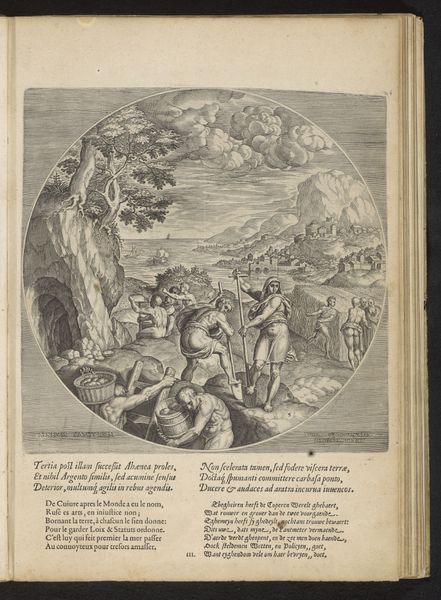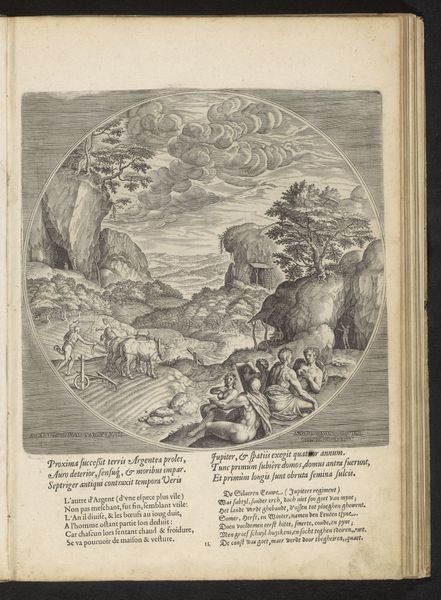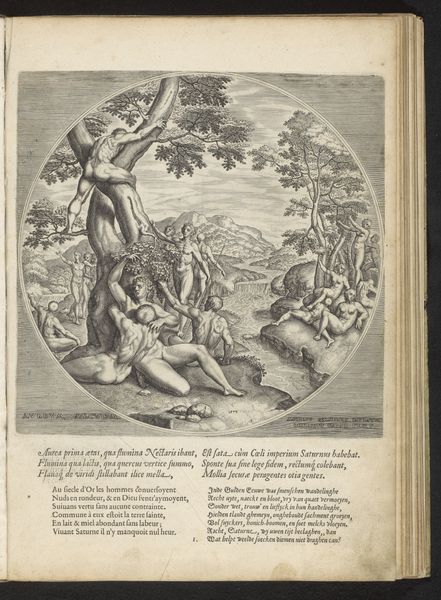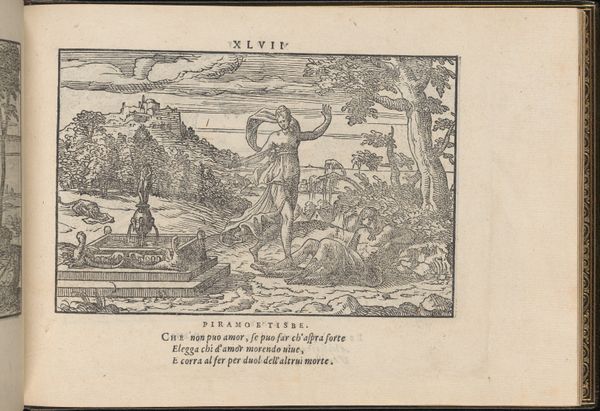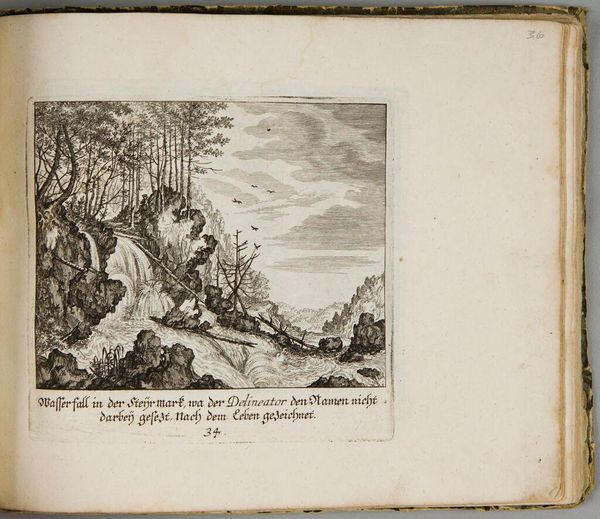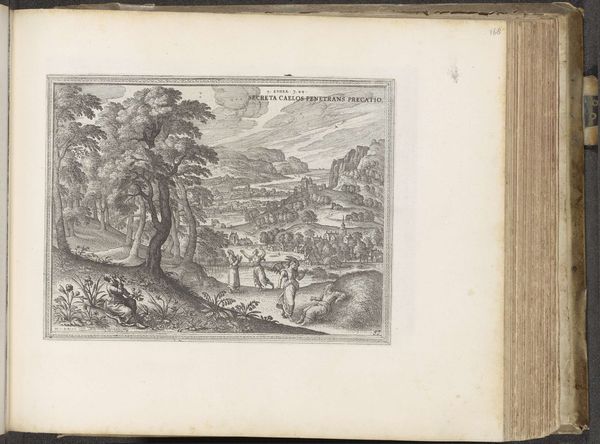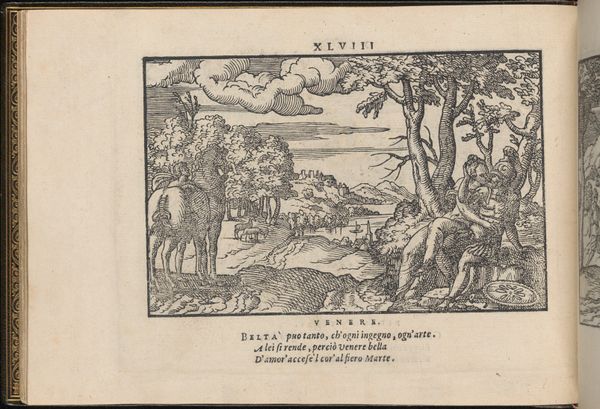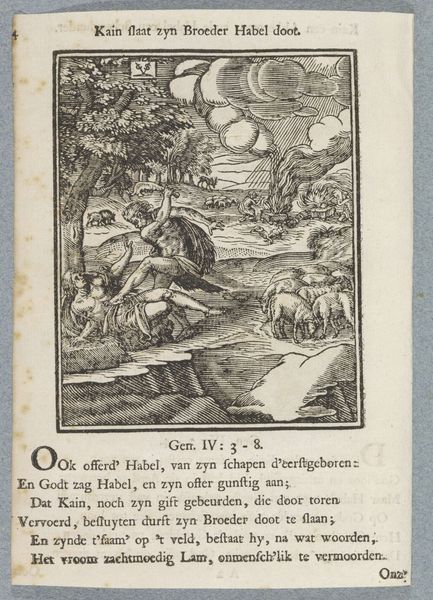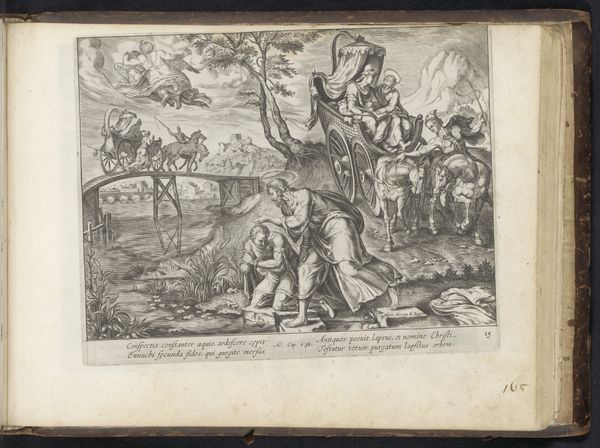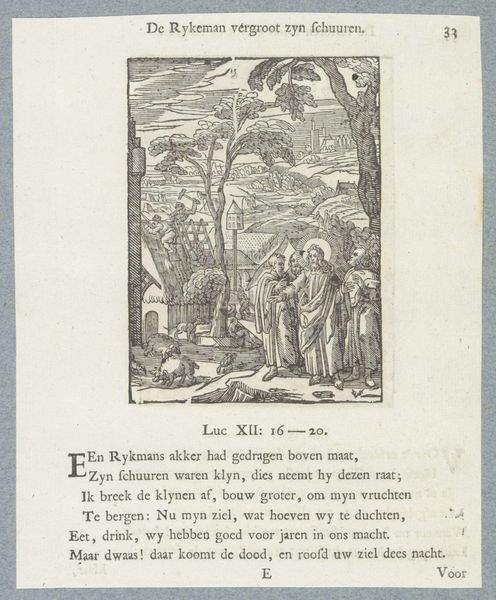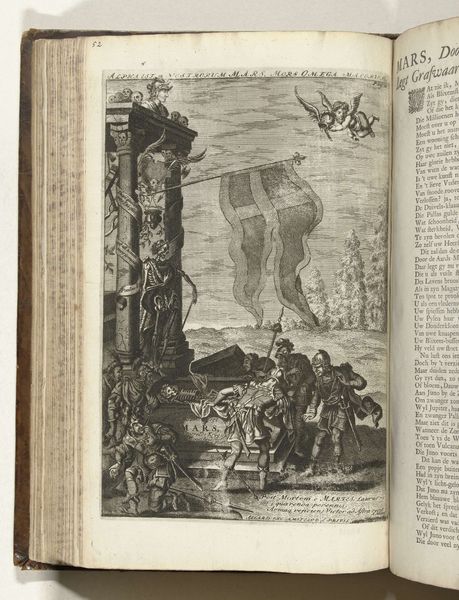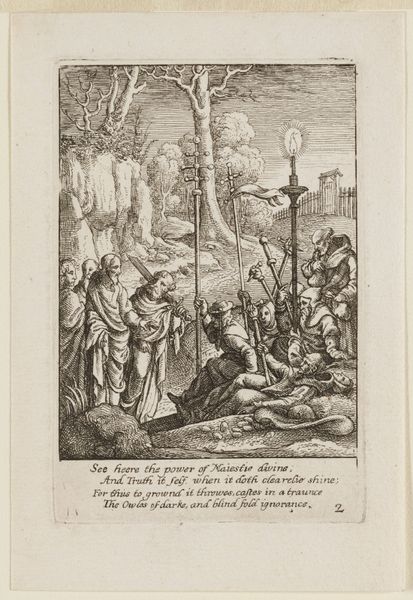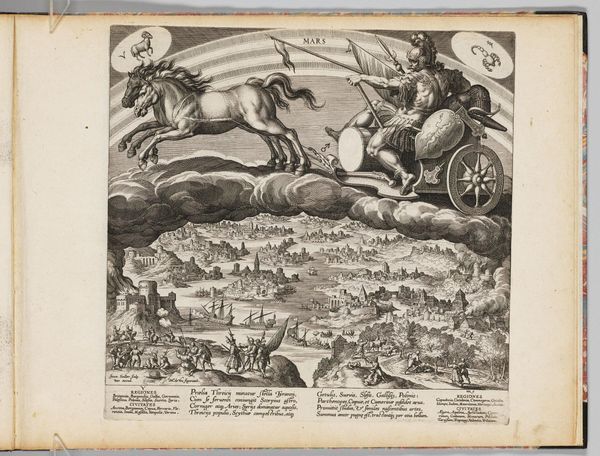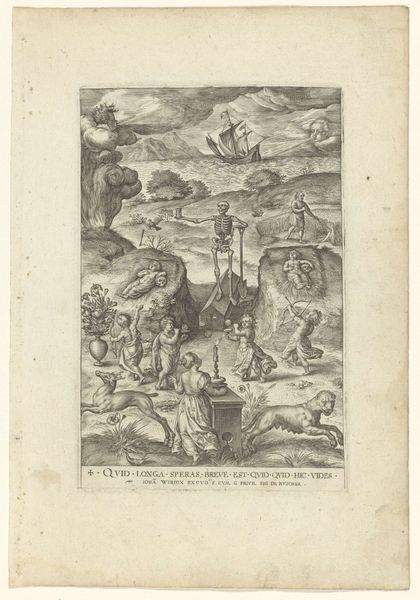
print, engraving
#
allegory
# print
#
mannerism
#
figuration
#
history-painting
#
engraving
Dimensions: height 246 mm, width 246 mm
Copyright: Rijks Museum: Open Domain
Curator: Let's take a look at Philips Galle's engraving, "IJzeren eeuw," created around 1573 and currently held at the Rijksmuseum. What are your initial thoughts? Editor: It strikes me as a very busy image. The swirling composition and plethora of figures give the impression of chaos and perhaps even societal breakdown, quite literally grounded in material greed and war. Curator: Absolutely. This engraving visualizes the Iron Age, a concept from classical mythology representing the decline of humanity from a state of virtue to one of vice. Notice how Galle utilizes Mannerist conventions: the exaggerated musculature, the dynamic poses, and the densely populated scene. The print becomes a commentary on societal decay fuelled by iron, the material of war and labor. How might we connect this allegory to the sociopolitical conditions of the 16th century? Editor: The focus on material greed links directly to the period of emerging capitalism. This imagery, with its unflinching gaze towards the instruments of making and destruction, reveals anxieties surrounding shifting power dynamics. Even the method of production -- etching and engraving on metal – highlights the dominance of the Iron Age. It’s a reflection of both the artistic techniques available and what these meant symbolically. Curator: I see it also as a commentary on gendered societal expectations during a tumultuous historical era. The central figures appear primarily female, reflecting contemporary anxieties about powerful women disrupting the patriarchal social order. They are enmeshed in activities like stealing, a condemnation of disruptive actions that directly upend class systems and gender norms of the period. The inclusion of Astraea’s departure, or “Justice” fleeing the earth due to humanity's wickedness, underscores this loss of moral authority. Editor: But these anxieties were material, grounded in land grabs, the exploitation of labor, the creation of trade routes that were less about exchanging knowledge and more about seizing goods. In essence, it lays bare the foundations on which our modern systems of production were built. This speaks of what we now understand as late-stage capitalism's inevitable spiral toward corruption and chaos. Curator: It’s fascinating to observe how Galle intertwines classical allegory with pressing contemporary concerns. Through figuration, Galle makes his moralizing argument clear, presenting an image deeply embedded in the historical moment. Editor: Exactly, this piece makes you think about our own relationship with material culture and how our tools and technologies shape not only our surroundings but also our social and moral structures.
Comments
No comments
Be the first to comment and join the conversation on the ultimate creative platform.
